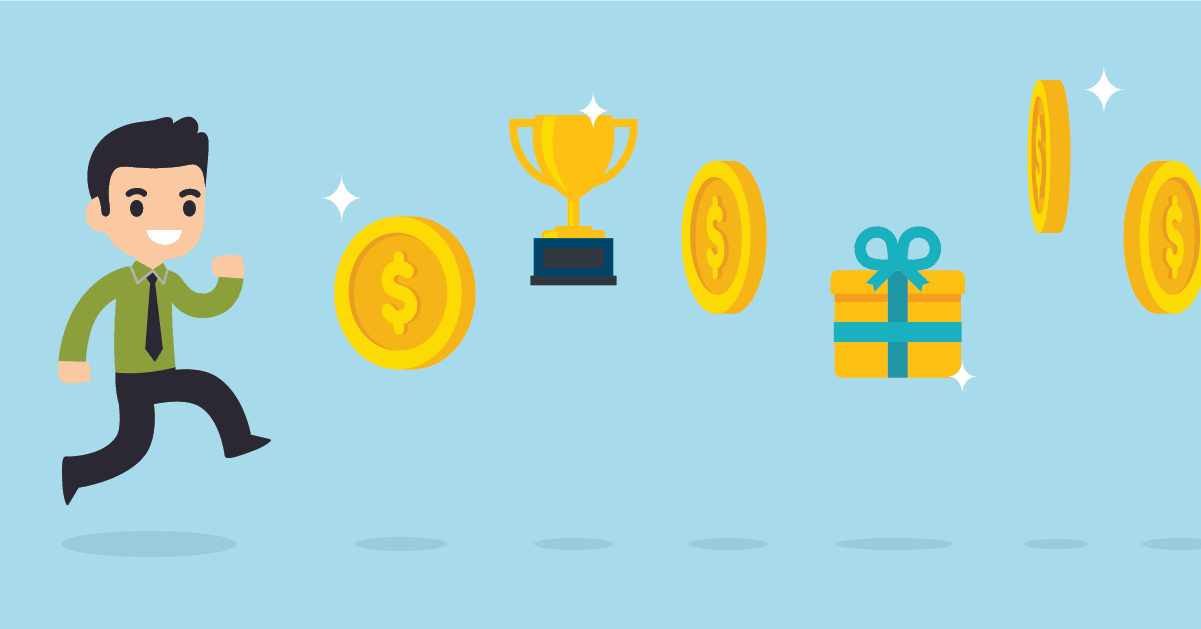Do you feel like you’ve run out of ideas to improve your team’s productivity? Maybe it’s time to try a new, more creative approach.
What if you could turn your employees’ everyday tasks into a game or friendly competition? Some of today’s top business are implementing various “gamification” strategies to improve the morale and focus of their workforce. And it’s working.
For example, OpenText created a system where their IT developers earn points and badges by sharing information, contributing to discussions, completing assignments, etc. After only a few weeks, 60 percent of the team was actively participating in the program and were “truly engaged”.
What is gamification?
As casual gaming on portable devices has increased, gamification has quickly been applied to various non-game environments. For example, many fitness trackers have elements of gamification, rewarding users with virtual badges when they’ve met a predetermined goal, such as daily steps or active minutes.
This concept can easily be applied to work-oriented goals. The idea is to be able to compare results to co-workers on a leader board. This plays to your employees’ competitive nature.
In this post, Insperity’s specialists share seven simple gamification ideas that you could implement in your workplace.
1. Create a merit-based raffle
Personally, I have used gamification in my previous role as a quality, safety and environmental manager.
To effectively make the staff more cognizant of their safety and the safety of others, I created a safety raffle. Employees received raffle tickets based upon the number of days they were safe. Those tickets were then entered into a drawing.
The drawing had items ranging from gift cards valued at $10-$250. The introduction of this gaming/reward system reduced the total accidents by 50 percent that year.
Abe Turner, performance consultant
Kingwood, Texas
2. Get your new hires excited
I created new hire orientation scavenger hunts. New employees have to search their new workplace for various information and locations, such as common communication boards, departments, meeting rooms, cafeterias, etc. When they find the items on their list, they get points for giveaways or drawings.
Gloria Sims, senior human resource specialist
Fort Worth, Texas
3. Use visuals to chart progress
You can’t go wrong with the classic large cardboard thermometer. Write the goal at the top of the thermometer and create tick marks to signify milestones, such as dollar amounts, hours, accolades, etc. As your employees make progress, they can color in the thermometer. Make sure to keep it lighthearted and fun; this shouldn’t be a grind.
Chris Brennan, performance specialist
Los Angeles, California
4. Make training interactive
Engagement of employees is a challenge for many companies, particularly with tasks that are more mundane. For HR, a common struggle is getting employees to complete compliance training. Using gamification for compliance training, such as incorporating interactive videos, quizzes, etc., provides a different approach that can bring in some fun and help to apply the training concepts to employees’ work day.
Mary Lou Parrott, performance consultant
5. Put the company’s core values into action
An idea I’ve had is to reward employees who best represent the company’s core values with a gift card. It doesn’t matter if it’s $5 or $100, it doesn’t take a lot to get people into that competitive and fun spirit.
Megan Moran, senior human resource specialist
Purchase, New York
6. Gather better employee feedback
Conventional employee surveys can be lengthy and some employees may opt out of answering due to busy schedules or lack of engagement. Reward employees for completing surveys with a “jeans day “or “leave one hour early” coupon. Gamification provides a vehicle to deploy brief and interactive pulse surveys, allowing you to ask a few targeted questions, and increase the probability of receiving employee responses.
Michelle Mikesell, managing director, consulting and development
7. Reward progress
For onboarding or any type of development project, it’s easy to break it down into segments or badges that can be displayed for gamification. For example, for each step of the way toward a goal, reward people with a badge (think color-coded karate belts) that shows off their progress and commitment. Not a lot of companies have the systems to do this but it can be done “old school” with badges to put on name plates, for example.
Jeff Miller, director, learning & performance.
Want to learn more about creative ways to develop an engaged workforce? Download our free e-book, How to develop a top-notch workforce that will accelerate your business.


